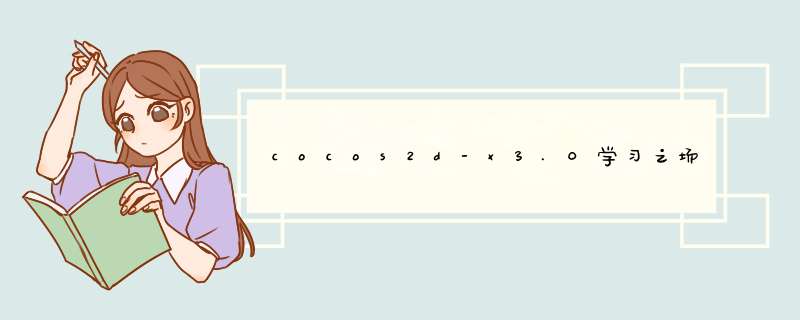
HelloWorldScene.h
#ifndef __HELLOWORLD_SCENE_H__
#define __HELLOWORLD_SCENE_H__
#include "cocos2d.h"
class HelloWorld : public cocos2d::Layer
{
public:
// there's no 'ID' in cpp,so we recommend returning the class instance pointer
static cocos2d::Scene* createScene();
// Here's a difference. Method 'init' in cocos2d-x returns bool,instead of returning 'ID' in cocos2d-iphone
virtual bool init();
// a selector callback
voID menuCloseCallback(cocos2d::Ref* pSender);
// implement the "static create()" method manually
CREATE_FUNC(HelloWorld);
voID HelloWorld::menujumpCallback(cocos2d::Ref* pSender);
cocos2d::Scene*createfirst();
voID HelloWorld::menureturn(cocos2d::Ref*pSender);
};
#endif // __HELLOWORLD_SCENE_H__
========================================================================================
HelloWorldScene.cpp
#include "HelloWorldScene.h"
USING_NS_CC;
Scene* HelloWorld::createScene()
{
// 'scene' is an autorelease object
auto scene = Scene::create();
// 'layer' is an autorelease object
auto layer = HelloWorld::create();
// add layer as a child to scene
scene->addChild(layer);
// return the scene
return scene;
}
voID HelloWorld::menureturn(cocos2d::Ref*pSender)
{
auto ss=HelloWorld::createScene();
auto ts=TransitionZoomFlipY::create(1.0f,ss);
Director::getInstance()->replaceScene(ts);
}
Scene*HelloWorld::createfirst()
{
auto s=Scene::create();
auto layer=Layercolor::create(color4B(100,10,128,128));
auto sprite=Sprite::create("bg.png");
layer->addChild(sprite);
auto l=LabelTTF::create("Welcome to play game","Arial",25);
auto d=Director::sharedDirector()->getWinSize();
auto wIDth=d.wIDth/2;
auto height=d.height/2;
l->setposition(Point(wIDth,height));
layer->addChild(l);
//create menu
auto returnmenu=MenuItemImage::create("leaf.png","icon.png",CC_CALLBACK_1(HelloWorld::menureturn,this));
returnmenu->setposition(Point(400,400));
auto mm=Menu::create(returnmenu,NulL);
mm->setposition(Point(400,400));
s->addChild(layer);
return s;
}
// on "init" you need to initialize your instance
bool HelloWorld::init()
{
//////////////////////////////
// 1. super init first
if ( !Layer::init() )
{
return false;
}
Size visibleSize = Director::getInstance()->getVisibleSize();
Vec2 origin = Director::getInstance()->getVisibleOrigin();
/////////////////////////////
// 2. add a menu item with "X" image,which is clicked to quit the program
// you may modify it.
// add a "close" icon to exit the progress. it's an autorelease object
auto closeItem = MenuItemImage::create(
"Closenormal.png",
"CloseSelected.png",
CC_CALLBACK_1(HelloWorld::menuCloseCallback,this));
closeItem->setposition(Vec2(origin.x + visibleSize.wIDth - closeItem->getContentSize().wIDth/2,
origin.y + closeItem->getContentSize().height/2));
// create menu,it's an autorelease object
auto menu = Menu::create(closeItem,NulL);
menu->setposition(Vec2::ZERO);
auto click=MenuItemImage::create("hagar1.png","hagar2.png",CC_CALLBACK_1(HelloWorld::menujumpCallback,this));
click->setposition(Point(100,100));
auto m=Menu::create(click,NulL);
m->setposition(Vec2::ONE);
this->addChild(menu,1);
this->addChild(m,1);
auto label = LabelTTF::create("cocos2d-x game",30);
// position the label on the center of the screen
label->setposition(Vec2(origin.x + visibleSize.wIDth/2,
origin.y + visibleSize.height - label->getContentSize().height));
// add the label as a child to this layer
this->addChild(label,1);
// add "HelloWorld" splash screen"
auto sprite = Sprite::create("HelloWorld.png");
// position the sprite on the center of the screen
sprite->setposition(Vec2(visibleSize.wIDth/2 + origin.x,visibleSize.height/2 + origin.y));
// add the sprite as a child to this layer
this->addChild(sprite,0);
return true;
}
voID HelloWorld::menujumpCallback(Ref* pSender)
{
auto scene=HelloWorld::createfirst();
auto s2=TransitionZoomFlipY::create(1.0f,scene);
Director::getInstance()->replaceScene(s2);
}
//导演类的结束方法
voID HelloWorld::menuCloseCallback(Ref* pSender)
{
#if (CC_TARGET_PLATFORM == CC_PLATFORM_WP8) || (CC_TARGET_PLATFORM == CC_PLATFORM_WINRT)
MessageBox("You pressed the close button. windows Store Apps do not implement a close button.","Alert");
return;
#endif
Director::getInstance()->end();
#if (CC_TARGET_PLATFORM == CC_PLATFORM_IOS)
exit(0);
#endif
}
总结以上是内存溢出为你收集整理的cocos2d-x3.0学习之场景切换代码全部内容,希望文章能够帮你解决cocos2d-x3.0学习之场景切换代码所遇到的程序开发问题。
如果觉得内存溢出网站内容还不错,欢迎将内存溢出网站推荐给程序员好友。
欢迎分享,转载请注明来源:内存溢出

 微信扫一扫
微信扫一扫
 支付宝扫一扫
支付宝扫一扫
评论列表(0条)